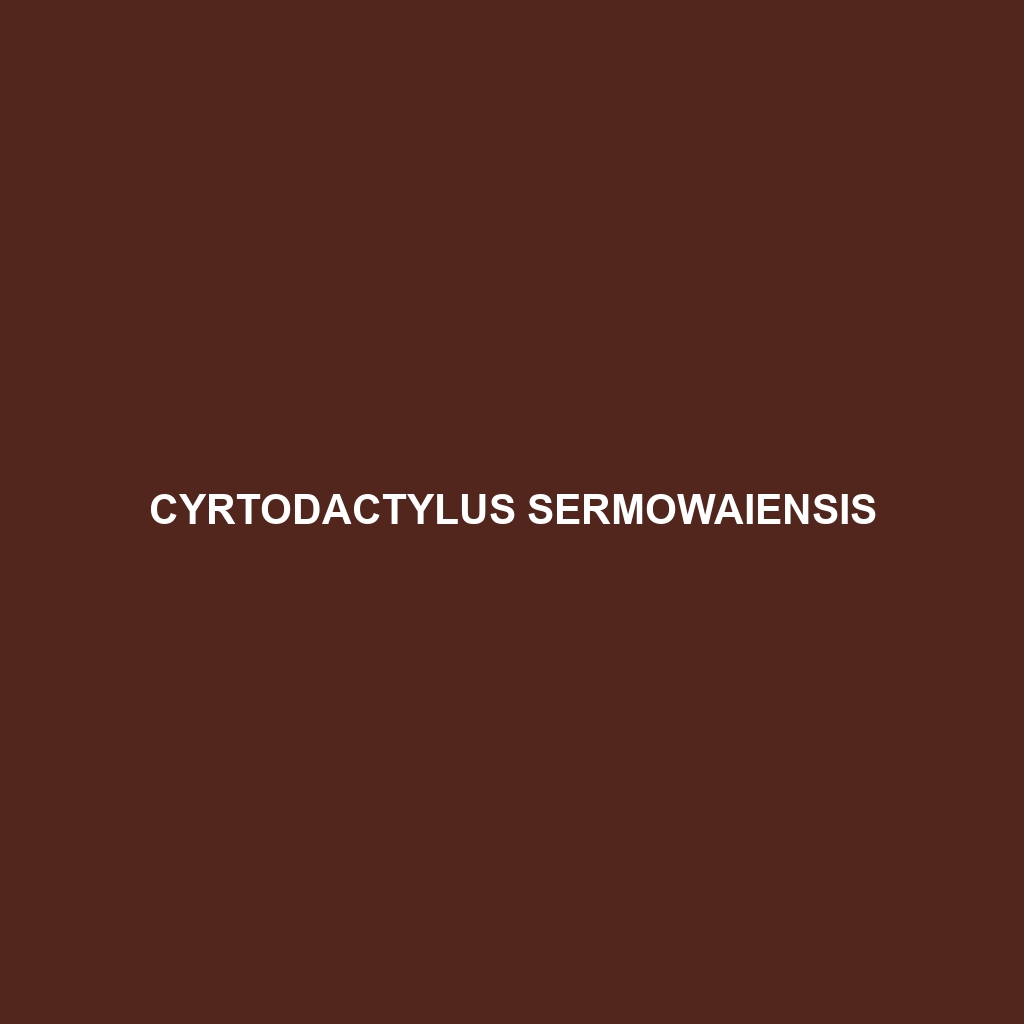Cyrtodactylus sermowaiensis: Species Description
Common Name: Cyrtodactylus sermowaiensis
Scientific Name: Cyrtodactylus sermowaiensis
Habitat
Cyrtodactylus sermowaiensis is primarily found in the tropical forests of Papua New Guinea, particularly in the Sermowai area. This gecko species thrives in humid environments that feature a dense canopy, providing ample cover and foraging opportunities. The rocky outcrops and leaf litter in these regions offer ideal conditions for their survival.
Physical Characteristics
This species can grow up to 8 inches in length, with a slender, elongated body and a distinctively flattened head. The color of Cyrtodactylus sermowaiensis ranges from light brown to a reddish hue, often adorned with dark brown spots that serve as camouflage against predators. Its toes are equipped with lamellae that enhance its climbing abilities, allowing it to navigate the forest canopy effortlessly.
Behavior
Cyrtodactylus sermowaiensis is primarily nocturnal, exhibiting a range of interesting behaviors during the night. This gecko is known for its agile climbing abilities as it searches for food and evade predators. They are also territorial, often displaying aggressive behaviors towards other males during mating season, which typically occurs during the warmer months.
Diet
This gecko primarily feeds on insects such as crickets, moths, and beetles, showcasing an insectivorous diet. Its ability to hunt at night allows it to exploit a diverse range of food sources, making it adaptable to varying environmental conditions. The hunting techniques of Cyrtodactylus sermowaiensis involve combining stealth and speed to capture prey effectively.
Reproduction
Cyrtodactylus sermowaiensis exhibits oviparous reproduction, with breeding typically occurring during the wet season. Females lay clutches of 1-2 eggs, which are often hidden in leaf litter or rocky crevices to protect them from predators. Hatchlings emerge after approximately 2-3 months, ready to fend for themselves almost immediately.
Conservation Status
Currently, Cyrtodactylus sermowaiensis is listed as ‘Vulnerable’ due to habitat loss caused by deforestation and land conversion for agriculture. Conservation efforts are essential to protect this species and its habitat from further decline.
Interesting Facts
One fascinating aspect of Cyrtodactylus sermowaiensis is its ability to change color slightly to blend in with its surroundings. This remarkable adaptation not only aids in camouflage but also helps the gecko regulate its body temperature in varying environmental conditions.
Role in Ecosystem
Cyrtodactylus sermowaiensis plays a vital role in its ecosystem as both a predator and prey. By maintaining insect populations, this gecko contributes to the ecological balance. Additionally, it serves as a food source for larger predators, demonstrating its importance in the food web.

